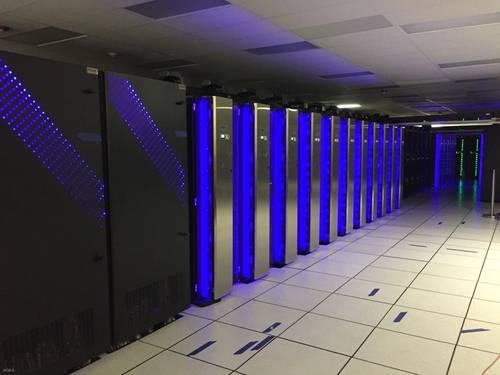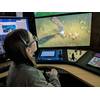U.S. weather models are about to become more accurate and efficient thanks to faster supercomputers and more storage.
The National Oceanic and Atmospheric Administration (NOAA) said the two Dell systems added to its IBMs and Crays at data centers in Reston, Va., and Orlando, Fla. elevate its combined weather and climate supercomputing system to among the 30 fastest in the world, with the ability to now process 8 quadrillion calculations per second.
“NOAA’s supercomputers play a vital role in monitoring numerous weather events from blizzards to hurricanes,” said Secretary of Commerce Wilbur Ross. “These latest updates will further enhance NOAA’s abilities to predict and warn American communities of destructive weather.”
The upgrade completes the third phase of a multiyear effort to build more powerful supercomputers that make complex calculations faster to improve weather, water and climate forecast models. Not only does the upgrade add 2.8 petaflops of speed at both data centers combined, increasing NOAA’s total operational computing speed to 8.4 petaflops — or 4.2 petaflops per site, it also adds 60 percent more storage capacity, allowing NOAA to collect and process more weather, water and climate observations used by all the models than ever before.
“NOAA’s supercomputers ingest and analyze billions of data points taken from satellites, weather balloons, airplanes, buoys and ground observing stations around the world each day,” said retired Navy Rear Adm. Timothy Gallaudet, Ph.D., acting NOAA administrator. “Having more computing speed and capacity positions us to collect and process even more data from our newest satellites — GOES-East, NOAA-20 and GOES-S — to meet the growing information and decision-support needs of our emergency management partners, the weather industry and the public.”
With this upgrade, U.S. weather supercomputing paves the way for NOAA’s National Weather Service (NWS) to implement the next generation Global Forecast System (GFS), known as the “American Model,” next year. Already one of the leading global weather prediction models, the GFS delivers hourly forecasts every six hours. The GFS upgrade in 2019 will increase resolution to allow NOAA to run the model at 9 kilometers and 128 levels out to 16 days, compared to the current run of 13 kilometers and 64 levels out to 10 days. The revamped GFS will run in research mode on the new supercomputers during this year’s hurricane season.
“As we look toward launching the next generation GFS in 2019, we’re taking a ‘community modeling approach’ and working with the best and brightest model developers in this country and abroad to ensure the new U.S. model is the most accurate and reliable in the world,” said NWS Director Louis W. Uccellini, Ph.D.
NOAA said the upgrade will lead to more innovation, efficiency and accuracy across the entire weather enterprise. It opens the door for the NWS to advance its seamless suite of weather, water and climate models over the next few years, allowing for more precise forecasts of extreme events a week in advance and beyond.
Improved hurricane forecasts and expanded flood information will enhance the agency’s ability to deliver critical support services to local communities. In addition, the new supercomputers will allow NOAA’s atmosphere and ocean models to run as one system, helping forecasters to more readily identify interaction between the two and reducing the number of operational models; as well as allow for development of a new seasonal forecast system to replace the Climate Forecast System in 2022, paving the way for improved seasonal forecasts as part of the Weather Research and Forecasting Innovation Act.
The added computing power will support upgrades to the National Blend of Models, which is being developed to provide a common starting point for all local forecasts; allow for more sophisticated ensemble forecasting, which is a method of improving the accuracy of forecasts by averaging results of various models; and provide quicker turnaround for atmosphere and ocean simulations, leading to earlier predictions of severe weather.
















 December 2025
December 2025



